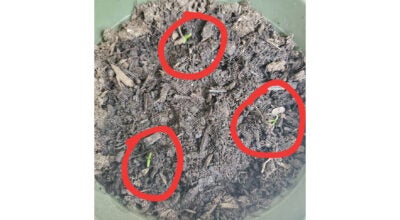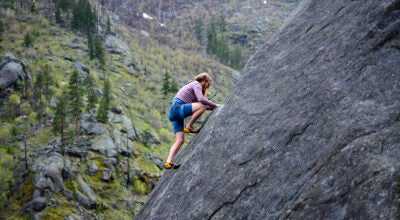A day at the farm
Published 12:53 am Wednesday, November 7, 2018
As America becomes more urban, many of us long to experience life on the farm — even if just for a day. Savvy landowners have figured out a way to cash in on those yearnings. It’s called agritourism.
Agritourism can involve a stint on a working ranch, a productive afternoon at a you-pick field of peas, or just a fun time at the local pumpkin patch. Here in Mississippi, agritourism is big business, generating some $150 million dollars each year.
I recently contributed to that figure by taking my bunch to Mitchell Farms in Collins. For those who’ve never been to Mitchell Farms, here’s how it works: Visitors pay $12 to do stuff like run through a corn maze, see baby goats, and eat boiled peanuts. At day’s end, they can pick out a pumpkin to take home.
The farm’s history is common enough. Dennis and Nelda Mitchell bought the original acreage in 1960, and through the years they’ve grown different crops. Today they cultivate about 1,400 acres of corn, wheat, soybeans, peanuts, and pumpkins. Things changed in 2006, though.
“We started talking about doing a pumpkin patch,” recalls Jo Lynn Mitchell, a daughter-in-law. “Agritourism really got kicked off in Mississippi, and I went to meetings and learned what other farmers were doing on their farms.”
What she learned was farmers were multi-tasking. While visitors had a fun experience watching them work, the farmers earned supplemental income. Jo Lynn liked the idea so much she quit her sales job to pursue it. “I thought if we could just have 5 or 6 hundred people to come that October, that would pay my costs, give me a little money, and hopefully we would sell more peanuts,” she said. “Well, it was just wonderful. We had about 5,000 people come.”
Since then, Mitchell Farms has grown into a full-blown agritourism adventure. On the day we visited, the farm hosted 11 school groups and 7 homeschool groups. Jo Lynn says other farmers are making a go with activities that range from mushroom foraging to birdwatching.
“I’ve got friends who have dairy farms whose parents were about to go out of business,” she explained. “They found they can bring kids out to the farm and teach them how cows are milked and where milk comes from. That’s a whole other stream of income for them. And that way they can also bring other family members back to the farm to have a job and keep the farm going for at least another generation.”
Having all these visitors raised questions about liability: What happens if visitors get hurt? Those concerns explain why Ohio, Texas, Florida and Mississippi recently passed laws to limit the liability of agritourism operators. Owners must take sensible efforts to make their property secure, but participants assume personal risk.
At Mitchell Farms, I noticed signs in various spots warning visitors about equipment and animal dangers. One hung near an air blower at a main attraction—a huge jumping pillow. Employee Jim Bush, sitting in a lifeguard-type chair with an umbrella, mans the spot. I asked him to describe the jumping pillow. “It’s basically a jumping house without the house attached to it – a bladder. It inflates with air,” he told me. “Kids love it. This morning we had 500 toddlers at one time. They just love to get up there and jiggle and laugh.”
But the Mitchell Farms tour doesn’t begin with the jumping attraction. It starts in a covered wagon pulled by a John Deere tractor. We held on to the rails as a recording told us about the huge peanut sheller by the barn and the field of sunflowers to the left. Later, the five preschoolers with us found the farm’s newest feature, a barn with double slides that land in a pool of corn. The pool is filled with corn right out of the field – 55 50-gallon drums of it. Bonnie Wade oversees that attraction. “When I first got this job, I thought the Lord was testing me with all these children,” she laughed. “But I think I passed. I’ve been able to come back every year.”
I noticed that while kids like the active aspects of farm life, adult visitors gravitate toward the realm of front-porch rockers and autumn merchandise at the main building. It doesn’t take long to realize that agritourism is all about marketing the season – candy apples, candy corn, and apple cider. In a corner of the store, a guest book was perched in front of an oscillating fan. Signatures from as far away as Minnesota, Oklahoma, and Illinois point to the extent of autumn – and ag’s – appeal. Jo Lynn has a theory as to why.
“God blessed us so much with such a beautiful place. Most people don’t have that anymore. Most people grow up in the city or grow up in town. They don’t have land anymore.”
Kim Henderson is a freelance writer. Contact her at kimhenderson319@gmail.com.





